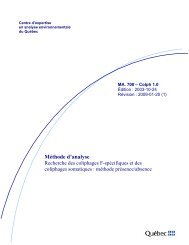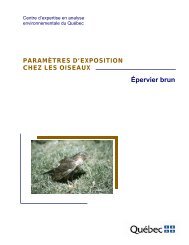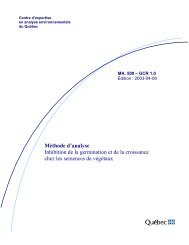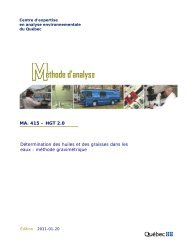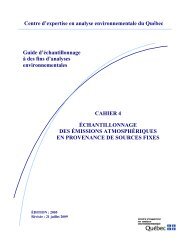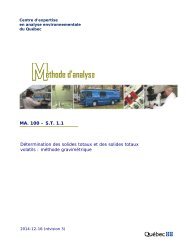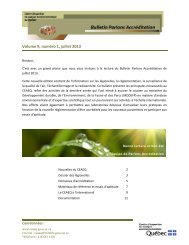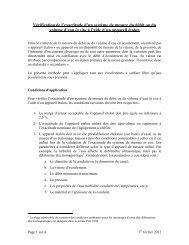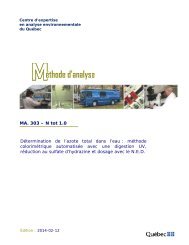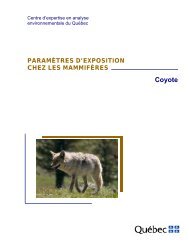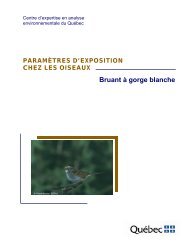Booklet 7 - Flow Measurement Methods in Open Channels
Booklet 7 - Flow Measurement Methods in Open Channels
Booklet 7 - Flow Measurement Methods in Open Channels
You also want an ePaper? Increase the reach of your titles
YUMPU automatically turns print PDFs into web optimized ePapers that Google loves.
−the Q = AU relation uses a wet section (A) and the average velocity (U).Each of these methods will be discussed <strong>in</strong> detail <strong>in</strong> the sections that follow.1.7. Primary measurement device methods<strong>Measurement</strong>s of cont<strong>in</strong>uous flows, <strong>in</strong> the case of an open channel flow, are performed us<strong>in</strong>g ahydraulic structure that establishes a unique depth-flow relationship. These hydraulic structures arecalled “primary measur<strong>in</strong>g devices” and can be separated <strong>in</strong>to two categories: control flumes and weirs.This method, which is most common, determ<strong>in</strong>es flow by means of calculation, based solely on ameasurement of the water depth upstream from the primary measur<strong>in</strong>g device.Choos<strong>in</strong>g a primary flow measurement device must be exam<strong>in</strong>ed and designed on the basis of thefollow<strong>in</strong>g:−−−−−a precise knowledge of the maximum and m<strong>in</strong>imum flowrates that may be channeled to theprimary device. The flows must, depend<strong>in</strong>g on the primary device considered, be <strong>in</strong>cluded <strong>in</strong> thelimits recommended <strong>in</strong> this guide;fluctuations <strong>in</strong> water depth, accord<strong>in</strong>g to m<strong>in</strong>imum and maximum flows, must be the extremelimits, <strong>in</strong> order to <strong>in</strong>crease measurement precision, particularly if there are small variations <strong>in</strong> flow;the presence of solid material and possible obstruction;compliance with standards govern<strong>in</strong>g <strong>in</strong>stallation, conditions for approach to the primary deviceand loss of pressure due to <strong>in</strong>sert<strong>in</strong>g the device;the ease of calibration and test<strong>in</strong>g equipment.Flumes are generally preferred over weirs, due to their numerous advantages, namely greater drops <strong>in</strong>pressure and their ability to self-clean.1.7.1. FlumesFlumes are usually prefabricated devices that are <strong>in</strong>stalled temporarily or permanently <strong>in</strong> a flowsystem.They can be a “flat-bottom” type. In the case of a flat-bottom flume, the shape of the side walls createsa contraction of the flow of liquid (ex. cutthroat flume). They can also comb<strong>in</strong>e vertical and sidecontractions (ex. Parshall flume).1.7.1.1 General descriptionA flume is essentially a specially-molded open section that creates a restriction <strong>in</strong> the flow area. Flumeswork accord<strong>in</strong>g to the Venturi pr<strong>in</strong>ciple. By reduc<strong>in</strong>g the flow area, velocity <strong>in</strong>creases and water depthchanges (1) .A flume usually has three sections: a converg<strong>in</strong>g section, throat section and diverg<strong>in</strong>g section.Page 16 of 223<strong>Booklet</strong> 7 - <strong>Flow</strong> <strong>Measurement</strong> <strong>Methods</strong> <strong>in</strong> <strong>Open</strong> <strong>Channels</strong>



